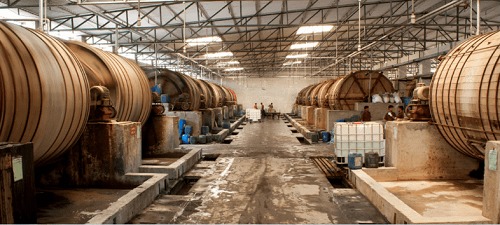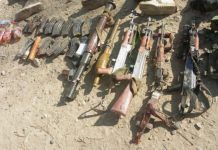ISLAMABAD: The leather industry, which produces 5.4% of the total export revenue and 5% of GDP, is considered to be the most crucial sector for Pakistan’s economic recovery as per the Pakistan Tannery Association (PTA) database.
Talking to WealthPK, Vice Chairman of Pakistan Tannery Association (South Zone) Yousuf Shafiq said, “95% of the products produced by the leather industry are exported. So, the leather industry rather than being driven by the domestic factors is mostly influenced by the outside factors.”
“The recent campaign against the leather industry in the international market was caused by negative branding as a result of its environmental impacts, such as the contamination of domestic water, extreme crowding and terrible treatment of animals during transit and slaughter,” he said.
Mr. Yousaf added, “Pakistan is in competition with its neighbors like Bangladesh and India. The cost of hides is almost the same in all regions, but the cost of transformation from raw materials to the fine export quality leather is very different.”
“Pakistan always remains behind its neighbors in terms of production cost. Other Asian countries do have competitive prices due to the availability of cheap labor, low cost, and uninterrupted supply of electricity,” said the PTV vice chairman.
He said, “Pakistan has to beat its neighbors in all terms to grab a major share in the international export market. Our leather industry leads its competitors in the region in terms of quality of product even at a higher cost.”
“The leather industry does face some challenges at the national level. For example, the cost of goods is rising daily as a result of the rising inflation,” he said.
Furthermore, the overall sales tax refund process is slow and fraught with complications, particularly historically. The exporters are unable to meet their obligations as a consequence of cash-flow problems since the government is taking too much time to settle the pending refund claims. High-priced energy inputs and blocked refund claims are adversely impacting the production and exports of this industry.
“For betterment of the leather industry, the government should provide low-cost and uninterrupted electricity to the industry. The sales tax claims should be released as soon as possible so that exporters may not have any cash-flow problems,” Yousaf said.
The export of leather and leather products for the Financial Year 2021-22 touched USD944.707 million as against USD833.199 million in the Financial Year 2020-21, up 13.4%. The leather industry is confident that its exports will soon reach the $1 billion mark.
In Pakistan, more than 800 tanneries are actively working to produce the highest-quality finished leather from cow, buffalo, sheep, and goat skins. Pakistan is known as a hub for producing high-grade leather and leather products.
The leather sector in Pakistan values the best environmental practices. For example, the Pakistan Tannery Association has developed a Combined Effluent Treatment Plant (CETP) in Korangi Industrial Area (KIA) of Karachi.
The plant not only treats the tanneries effluent, but also water for the general public. The plant attracts foreign buyers for its compliance with the National Environmental Quality Standards (NEQS).
-INP




